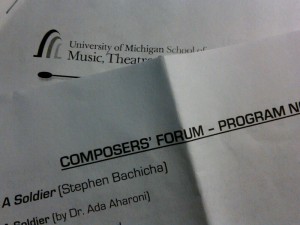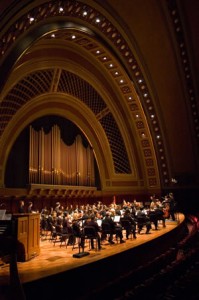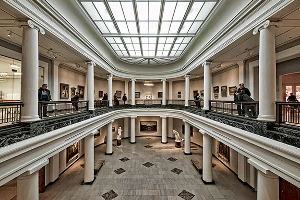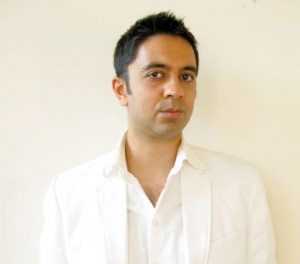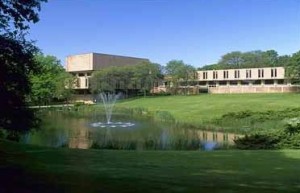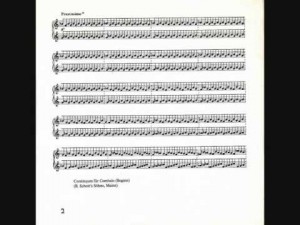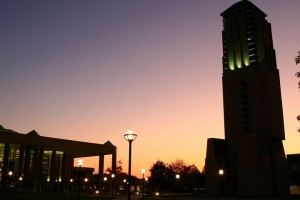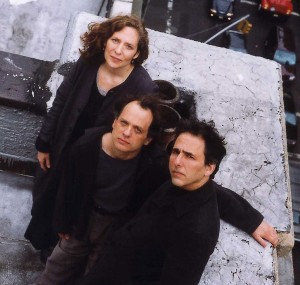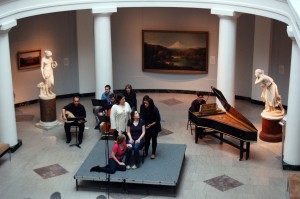
This past Friday and Saturday gave Ann Arbor new music seekers two compact and powerful concerts: the final concert of the year for the University of Michigan Contemporary Directions Ensemble (CDE) and a series of 8-minute operas created by graduate students in Music Composition and Creative Writing from the University of Michigan. The CDE concert – directed by charismatic conductor Christopher James Lees – was about an hour in length, and packed into that time four vibrant works from Pulitzer Prize winners Leslie Bassett, William Bolcom, Jennifer Higdon and Shulamit Ran. Similarly, it took an hour to see all the brief operas performed on Saturday, which were on display at the beautiful Univeristy of Michigan Museum of Art (UMMA).
The program for Friday’s concert featured a disparate set of pieces, which began with Jennifer Higdon’s Zaka for pierrot ensemble, written for and made popular by Eighth Blackbird. This was my first time hearing this piece – or any by Ms. Higdon, for that matter – and I was struck by how many other, later pieces I’ve heard by other composers, which resemble it strongly. With two opposing groups of material, Zaka is principally focused on rhythm and color, and – on its largest scale – contrasts incessant rhythmic drive with a placid chorale-like middle section, which she references towards the end.
Other writing about Zaka I’ve encountered likens the piece’s orchestration to Igor Stravinsky’s and notes how the work focuses on Ms. Higdon’s own instrument, the flute. I suppose the constantly shifting colors can be vaguely connected to the mischievous and convivial timbres of Petrushka or L’histoire du Soldat, but Zaka’s unusual sounds actually led my attention to a different member of the ensemble: the piano. For much of the work’s fast music, the pianist plays inside the piano, intermittently hitting open fifth ‘power chords’ along the way. Though the rest of the ensemble is subjected to similar extended techniques – none more remarkable than the clarinetist’s futile tapping on the mouthpiece-less opening at the top of his instrument – it seemed like the piano’s role in the piece was most significantly shaped by these uncommon colors, particularly because it leads the group in the work’s slow contrasting midsection.
After Zaka whirled itself into nothingness, the audience was treated to Leslie Bassett’s Brass Quintet, a stark contrast to the Higdon in its traditional materials and nearly uniform instrumental color. The instigator in this work is the Tuba, which – from the outset – tends to challenge the textural status quo of the rest of the ensemble. Unexpectedly, only one movement uses mutes, but this overall stable timbre suits the narrow scope of material transformation from the piece’s beginning to end. Brass Quintet stays close to home for much of its duration, and often references previous material sometimes for the purpose of establishing a landmark in unfamiliar musical territories or also developing earlier ideas a few movements later. Although the most reserved work on the program, Mr. Bassett’s Brass Quintet still shone brightly with its elegantly spaced sonorities, allusions to jazz and puckish Tuba part.
